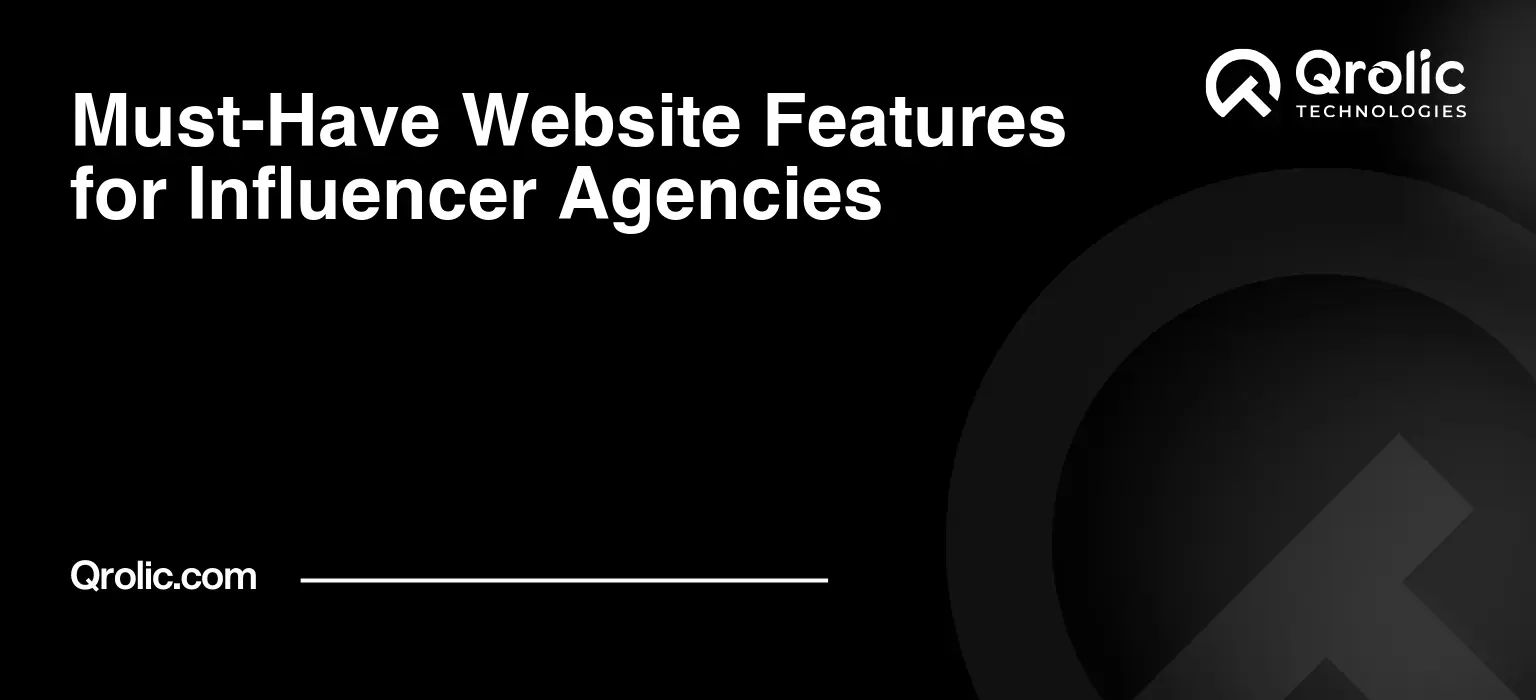An influencer agency website is more than just a digital business card; it’s the central hub for attracting clients (brands), signing influencers, showcasing campaigns, and establishing credibility in a rapidly evolving market. In the hyper-competitive world of social media marketing, a top-notch website is non-negotiable. This article delves into the must-have features that will transform your influencer agency website from a basic online presence to a powerful lead-generating and brand-building machine.
Quick Summary:
- Use stunning visuals and clean website design.
- Showcase successful campaigns and amazing influencers.
- Make contacting you easy, fast, and trustworthy.
- Keep your website updated and technically strong.
Table of Contents
- I. Compelling Visual Storytelling: First Impressions Matter
- A. High-Quality Imagery and Video
- B. Engaging Video Content
- C. Website Design Aesthetics: Clean and Intuitive
- II. Showcase Your Expertise: Case Studies and Success Stories
- A. Dedicated Case Study Section
- B. Influencer Profiles: Spotlight Your Talent
- C. Blog: Share Your Insights and Expertise
- III. Seamless Communication: Making it Easy to Connect
- A. Prominent Contact Form
- B. Live Chat Support
- C. Clear Call to Actions (CTAs)
- IV. Technical Excellence: Performance and Security
- A. Fast Loading Speed
- B. Mobile Responsiveness
- C. Website Security (SSL Certificate)
- D. SEO-Friendly URL Structure
- V. Building Trust and Credibility
- A. Testimonials and Reviews
- B. Awards and Recognition
- C. Privacy Policy and Terms of Service
- VI. Advanced Features for Growth and Scalability
- A. CRM Integration
- B. Email Marketing Integration
- C. Analytics Tracking (Google Analytics)
- VII. Qrolic Technologies: Your Partner in Digital Excellence
- VIII. Continuous Improvement: Iterating for Optimal Performance
- A. Regular Website Audits
- B. A/B Testing and Optimization
- C. Staying Up-to-Date with Industry Trends
I. Compelling Visual Storytelling: First Impressions Matter

The human brain processes visuals 60,000 times faster than text. Your influencer agency website needs to capitalize on this.
A. High-Quality Imagery and Video
- Why it Matters: Blurry, low-resolution images scream “unprofessional.” High-quality visuals communicate competence and attention to detail, crucial for attracting discerning brands and top-tier influencers.
- Examples:
- Campaign Showcases: Feature stunning photos and video reels of successful campaigns you’ve executed. Use before-and-after shots to demonstrate impact.
- Influencer Spotlights: Invest in professional headshots and short video interviews with your key influencers. Showcasing their personalities and expertise builds trust.
- Behind-the-Scenes Content: Offer glimpses into your agency’s culture, events, and creative process. Humanize your brand and build rapport.
- SEO Implications: Optimize image alt tags with relevant keywords like “influencer marketing campaign,” “social media influencer,” and “brand partnership.” Compress images to improve page load speed, a critical ranking factor.
B. Engaging Video Content
- Why it Matters: Video is the most consumed type of content online. Leverage it to tell your agency’s story, showcase your expertise, and connect with your audience on an emotional level.
- Types of Videos:
- Agency Overview: A short, compelling video introducing your agency’s mission, values, and team.
- Case Study Videos: Detailed breakdowns of successful campaigns, featuring testimonials from clients and influencers.
- Expert Interviews: Feature interviews with your team members discussing industry trends, best practices, and emerging platforms.
- “Day in the Life” Videos: Offer a behind-the-scenes look at the daily operations of your agency.
- Placement Strategy:
- Homepage Hero Section: A captivating video can immediately grab visitors’ attention.
- Service Pages: Explain your service offerings with short, explainer videos.
- Blog Posts: Embed relevant videos to enhance engagement and provide additional value.
- Actionable Tip: Use professional editing software and consider adding captions for accessibility and improved viewing on mobile devices.
C. Website Design Aesthetics: Clean and Intuitive
- Why it Matters: A cluttered or confusing website will drive visitors away. A clean, intuitive design ensures a positive user experience and encourages exploration.
- Best Practices:
- Whitespace: Use ample whitespace to create visual breathing room and improve readability.
- Color Palette: Choose a color palette that aligns with your brand identity and evokes the desired emotions.
- Typography: Select fonts that are easy to read and visually appealing.
- Mobile-First Design: Ensure your website is fully responsive and optimized for mobile devices, as a significant portion of website traffic comes from mobile users. Google prioritizes mobile-first indexing.
II. Showcase Your Expertise: Case Studies and Success Stories

Prove your worth by demonstrating your track record of success.
A. Dedicated Case Study Section
- Why it Matters: Case studies are powerful social proof. They demonstrate your ability to deliver results and build confidence with potential clients.
- Essential Elements of a Case Study:
- Client Overview: Briefly introduce the client and their industry.
- Challenge: Clearly define the client’s marketing challenge or goal.
- Solution: Explain the strategy and tactics you implemented to address the challenge.
- Results: Quantify the results achieved, using metrics like reach, engagement, website traffic, and conversions.
- Visuals: Include relevant images and videos to illustrate the campaign’s impact.
- Client Testimonial: Feature a quote from the client expressing their satisfaction with the results.
- Organizing Case Studies:
- Filter by Industry: Allow users to easily find case studies relevant to their industry.
- Filter by Platform: Enable users to filter by social media platform (e.g., Instagram, TikTok, YouTube).
- Featured Case Studies: Highlight your most impressive or recent campaigns.
- SEO Tip: Optimize each case study page with relevant keywords, such as “influencer marketing case study,” “[client industry] influencer campaign,” and “[social media platform] marketing.”
B. Influencer Profiles: Spotlight Your Talent
- Why it Matters: Influencers are the heart of your agency. Showcasing their profiles attracts brands looking for specific expertise and helps you recruit new talent.
- Key Elements of an Influencer Profile:
- High-Quality Photos and Videos: Showcase their best work and personality.
- Bio: A concise and compelling description of their niche, audience, and brand partnerships.
- Social Media Links: Direct links to their profiles on all relevant platforms.
- Audience Demographics: Provide insights into their audience demographics (age, location, gender, interests).
- Metrics: Showcase key metrics like follower count, engagement rate, and average reach.
- Past Collaborations: Highlight successful collaborations with brands.
- Contact Information: Make it easy for brands to reach out and inquire about partnerships.
- Search Functionality: Implement a robust search function that allows brands to filter influencers by niche, platform, audience demographics, and other criteria.
C. Blog: Share Your Insights and Expertise
- Why it Matters: A blog is a valuable tool for establishing thought leadership, attracting organic traffic, and nurturing leads.
- Content Ideas:
- Industry Trends: Share insights on the latest trends in influencer marketing.
- Best Practices: Provide actionable tips and strategies for successful campaigns.
- Platform Guides: Offer guides to navigating different social media platforms.
- Case Study Deep Dives: Provide more in-depth analyses of your successful campaigns.
- Influencer Marketing News: Curate and comment on relevant news articles and industry reports.
- SEO Optimization:
- Keyword Research: Conduct thorough keyword research to identify relevant topics that your target audience is searching for.
- On-Page Optimization: Optimize your blog posts with relevant keywords in the title, headings, and body text.
- Internal Linking: Link to other relevant pages on your website to improve SEO and user engagement.
- Guest Posting: Invite industry experts to contribute guest posts to your blog to expand your reach and authority.
- Call to Action: Include a clear call to action at the end of each blog post, encouraging visitors to learn more about your services or contact form you.
III. Seamless Communication: Making it Easy to Connect
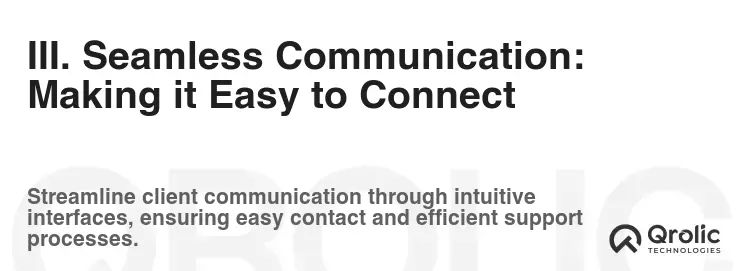
A frictionless contact form process is essential for capturing leads and building relationships.
A. Prominent Contact Form
- Why it Matters: A contact form is the primary way for potential clients and influencers to reach out to your agency. Make it easy to find and use.
- Best Practices:
- Placement: Prominently display your contact form on your homepage, contact form page, and throughout your website.
- Simplicity: Keep the contact form concise and easy to fill out. Only ask for essential information.
- Mobile Optimization: Ensure your contact form is fully responsive and easy to use on mobile devices.
- CAPTCHA: Implement a CAPTCHA to prevent spam submissions.
- Thank You Page: Redirect users to a thank you page after they submit the contact form, confirming that their message has been received.
- Essential Fields:
- Name:
- Email:
- Company (for Brands):
- Social Media Links (for Influencers):
- Message:
B. Live Chat Support
- Why it Matters: Live chat provides instant support to website visitors, allowing you to answer questions and address concerns in real-time.
- Benefits:
- Improved Customer Service: Provide instant support and resolve issues quickly.
- Increased Lead Generation: Capture leads and qualify prospects in real-time.
- Enhanced User Experience: Offer a more personalized and engaging experience for website visitors.
- Implementation:
- Choose a Reputable Live Chat Platform: Select a platform that offers features like customizable chat windows, proactive chat invitations, and integration with your CRM.
- Staff Your Chat with Trained Agents: Ensure that your live chat agents are knowledgeable about your services and capable of providing excellent customer service.
- Set Clear Expectations: Clearly communicate your live chat hours of operation.
C. Clear Call to Actions (CTAs)
- Why it Matters: CTAs guide visitors towards desired actions, such as contacting you, requesting a proposal, or downloading a resource.
- Effective CTAs:
- Use Action-Oriented Language: Use verbs that encourage action, such as “Contact Us,” “Get a Quote,” “Download Now,” or “Learn More.”
- Create Visual Contrast: Make your CTAs stand out by using contrasting colors and a clear, concise font.
- Place CTAs Strategically: Place CTAs in prominent locations on your website, such as the homepage, service pages, and blog posts.
- A/B Testing: Experiment with different CTA wording, colors, and placement to optimize their effectiveness.
IV. Technical Excellence: Performance and Security
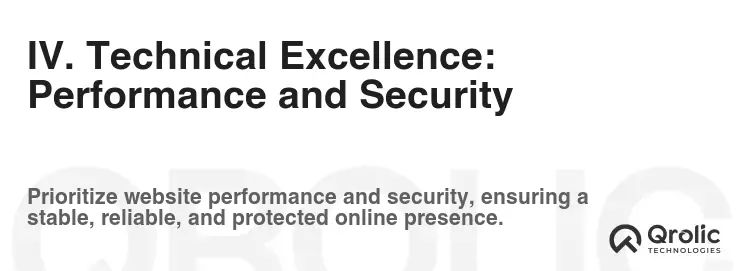
A fast, secure, and reliable website is crucial for user experience and SEO.
A. Fast Loading Speed
- Why it Matters: Website loading speed is a critical ranking factor for Google. Slow-loading websites frustrate users and lead to high bounce rates.
- Optimization Techniques:
- Optimize Images: Compress images without sacrificing quality to reduce file size.
- Leverage Browser Caching: Enable browser caching to store static resources locally, allowing them to load faster on subsequent visits.
- Minify CSS and JavaScript: Remove unnecessary characters from your CSS and JavaScript files to reduce their size.
- Use a Content Delivery Network (CDN): Distribute your website’s content across multiple servers to improve loading speed for users around the world.
- Choose a Fast Hosting Provider: Select a hosting provider that offers fast servers and reliable uptime.
- Testing Tools: Use tools like Google PageSpeed Insights and GTmetrix to analyze your website’s loading speed and identify areas for improvement.
B. Mobile Responsiveness
- Why it Matters: Google prioritizes mobile-first indexing, meaning it primarily uses the mobile version of your website for indexing and ranking. A mobile-responsive website provides a seamless experience for users on all devices.
- Testing: Use Google’s Mobile-Friendly Test to check if your website is mobile-friendly.
- Implementation: Use a responsive design framework like Bootstrap or Foundation to ensure that your website adapts to different screen sizes.
C. Website Security (SSL Certificate)
- Why it Matters: An SSL certificate encrypts the communication between your website and visitors, protecting sensitive information like passwords and credit card details. Google penalizes websites without SSL certificates.
- Implementation: Obtain an SSL certificate from a reputable provider and install it on your web server. Ensure that your website uses HTTPS instead of HTTP.
D. SEO-Friendly URL Structure
- Why it Matters: A clear and concise URL structure helps search engines understand the content of your pages and improve your rankings.
- Best Practices:
- Use Descriptive Keywords: Include relevant keywords in your URLs to describe the content of the page.
- Keep URLs Short: Shorter URLs are easier to read and share.
- Use Hyphens to Separate Words: Use hyphens to separate words in your URLs, rather than underscores or spaces.
- Avoid Dynamic Parameters: Avoid using dynamic parameters in your URLs, as they can make them difficult to read and understand.
V. Building Trust and Credibility
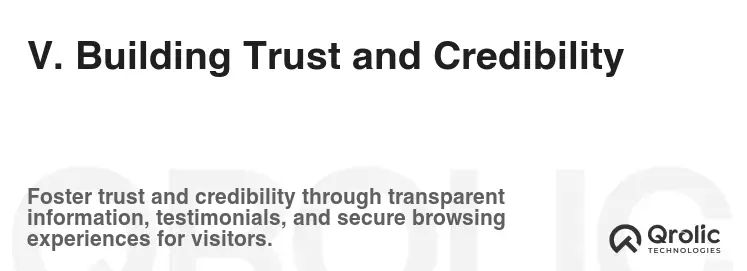
Demonstrate your authenticity and build trust with potential clients and influencers.
A. Testimonials and Reviews
- Why it Matters: Testimonials and reviews provide social proof and build credibility. They show that other clients have had positive experiences working with your agency.
- Implementation:
- Gather Testimonials: Request testimonials from satisfied clients and influencers.
- Display Testimonials Prominently: Display testimonials on your homepage, service pages, and case study pages.
- Use Video Testimonials: Video testimonials are more engaging and impactful than written testimonials.
- Showcase Reviews: Display reviews from reputable review platforms like Google My Business and Clutch.
B. Awards and Recognition
- Why it Matters: Awards and recognition demonstrate your agency’s expertise and success.
- Implementation:
- Display Awards Badges: Display award badges on your homepage and other relevant pages.
- Mention Awards in Your About Us Page: Highlight your awards and recognition in your “About Us” page to further establish your credibility.
C. Privacy Policy and Terms of Service
- Why it Matters: A clear and comprehensive privacy policy and terms of service demonstrate transparency and build trust with visitors. They also protect your agency from legal liabilities.
- Implementation:
- Create a Privacy Policy: Outline how you collect, use, and protect user data.
- Create Terms of Service: Define the terms and conditions for using your website and services.
- Link to These Pages Prominently: Link to your privacy policy and terms of service in the footer of your website.
VI. Advanced Features for Growth and Scalability
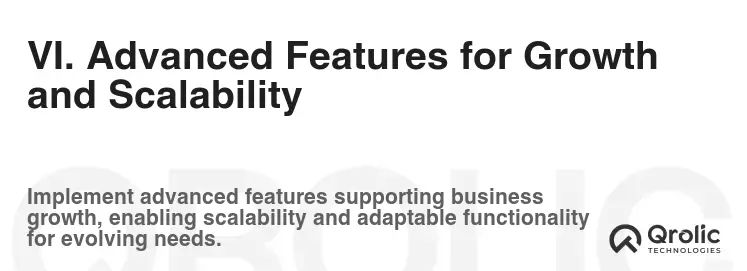
These features will help you streamline operations, enhance customer service, and scale your business.
A. CRM Integration
- Why it Matters: CRM (Customer Relationship Management) integration allows you to manage your leads, contacts, and customer interactions in one central location.
- Benefits:
- Improved Lead Management: Track leads and nurture them through the sales funnel.
- Enhanced Customer Service: Provide personalized support and build stronger relationships with clients.
- Streamlined Communication: Centralize all communication with clients and influencers.
- Data-Driven Insights: Gain insights into your sales and marketing performance.
- Popular CRM Platforms: Salesforce, HubSpot, Zoho CRM.
B. Email Marketing Integration
- Why it Matters: Email marketing is a powerful tool for nurturing leads, promoting your services, and staying in touch with your audience.
- Benefits:
- Targeted Communication: Send targeted email campaigns to specific segments of your audience.
- Automated Email Sequences: Automate your email marketing efforts to save time and improve efficiency.
- Trackable Results: Track the performance of your email campaigns to optimize your strategy.
- Popular Email Marketing Platforms: Mailchimp, Constant Contact, Sendinblue.
C. Analytics Tracking (Google Analytics)
- Why it Matters: Google Analytics provides valuable insights into your website’s traffic, user behavior, and conversion rates.
- Implementation:
- Install Google Analytics Tracking Code: Install the Google Analytics tracking code on your website.
- Set Up Goals and Conversions: Set up goals and conversions to track key actions on your website, such as contact form submissions and downloads.
- Monitor Your Website’s Performance: Regularly monitor your website’s performance in Google Analytics to identify areas for improvement.
VII. Qrolic Technologies: Your Partner in Digital Excellence
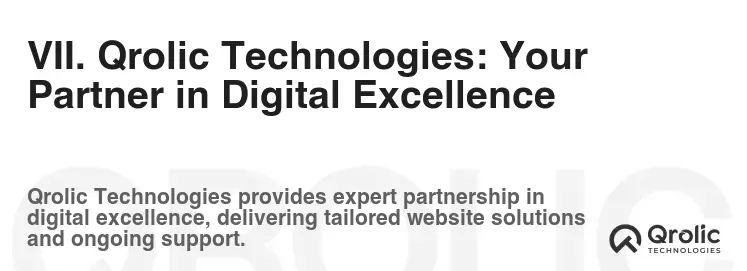
At Qrolic Technologies (https://qrolic.com/), we understand the unique challenges and opportunities faced by influencer agencies in today’s digital landscape. We offer a comprehensive suite of services designed to help you build a powerful online presence, attract clients, and scale your business. Our services include:
- Website Design and Development: We create stunning, user-friendly websites that are optimized for performance, security, and SEO.
- SEO Services: We help you improve your website’s search engine rankings and drive more organic traffic.
- Social Media Marketing: We help you manage your social media presence, engage with your audience, and run successful campaigns.
- Content Marketing: We create high-quality content that attracts leads, builds trust, and establishes your agency as a thought leader.
- Digital Advertising: We help you run targeted advertising campaigns on platforms like Google Ads and social media.
We are committed to providing our clients with exceptional service and delivering measurable results. Contact us today to learn more about how we can help you achieve your business goals.
VIII. Continuous Improvement: Iterating for Optimal Performance
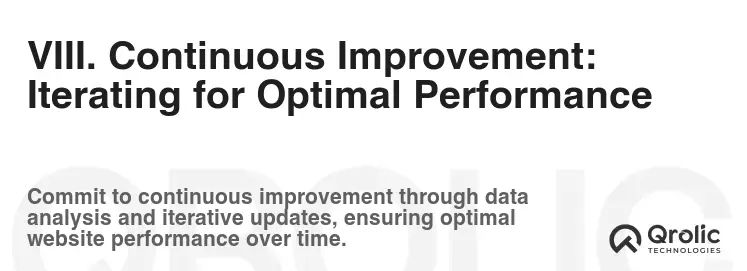
Your influencer agency website is not a static entity; it’s a living, breathing organism that requires constant attention and optimization.
A. Regular Website Audits
- Why it Matters: Regular website audits help you identify areas for improvement in terms of performance, security, and user experience.
- Elements to Audit:
- Website Loading Speed: Use tools like Google PageSpeed Insights to identify and address any performance bottlenecks.
- Mobile Responsiveness: Ensure that your website is fully responsive and provides a seamless experience on all devices.
- SEO Performance: Monitor your website’s search engine rankings and identify opportunities to improve your SEO.
- User Experience: Analyze user behavior to identify areas where you can improve the user experience.
B. A/B Testing and Optimization
- Why it Matters: A/B testing allows you to experiment with different website elements and identify the most effective versions.
- Elements to Test:
- Headlines: Test different headlines to see which ones generate the most clicks and engagement.
- CTAs: Test different CTA wording, colors, and placement to optimize their effectiveness.
- Images and Videos: Test different images and videos to see which ones resonate most with your audience.
- Layout and Design: Experiment with different website layouts and designs to improve user experience and conversions.
C. Staying Up-to-Date with Industry Trends
- Why it Matters: The influencer marketing industry is constantly evolving. Staying up-to-date with the latest trends and best practices is essential for maintaining a competitive edge.
- How to Stay Informed:
- Follow Industry Blogs and Publications: Subscribe to industry blogs and publications to stay informed about the latest trends and best practices.
- Attend Industry Conferences and Events: Attend industry conferences and events to network with other professionals and learn from experts.
- Join Online Communities: Participate in online communities to connect with other professionals and share insights.
By implementing these must-have features, your influencer agency website will become a powerful tool for attracting clients, signing influencers, showcasing campaigns, and establishing your agency as a leader in the industry. Remember to prioritize user experience, SEO optimization, and continuous improvement to ensure that your website remains effective and relevant in the ever-evolving digital landscape.
